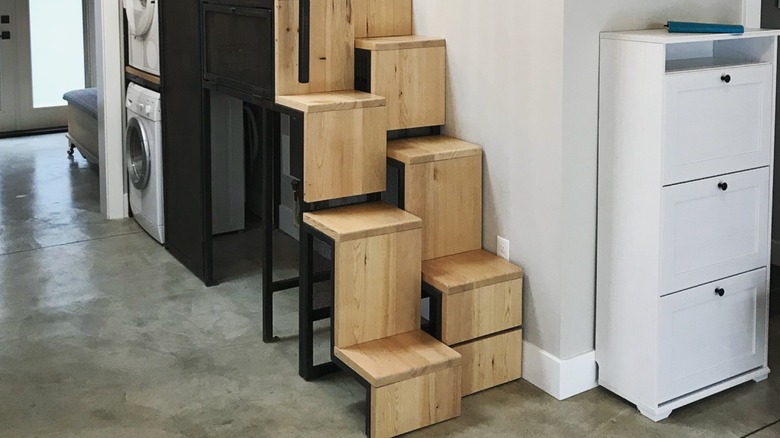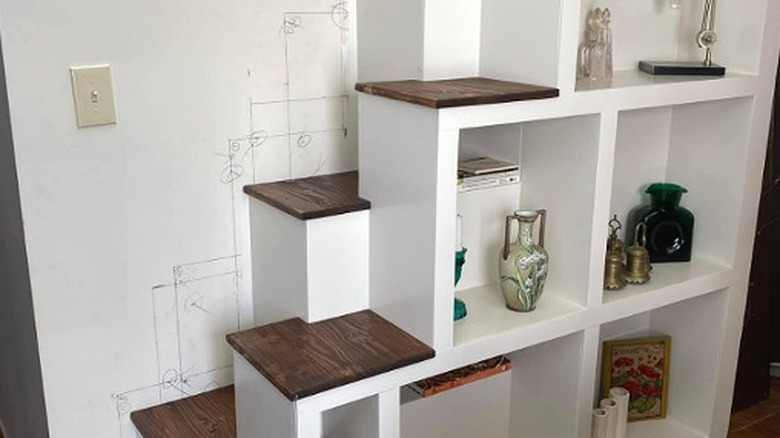Why Witch Stairs Are Perfect For Small Spaces
Witch stairs — also known as alternate-tread stairs or Jefferson stairs — are characterized by their distinctive design featuring alternating treads that create a zigzag formation. This unique construction makes the stairs steeper, but also an ideal choice for small homes. Witch stairs look like typical stair steps, except they're split in half and then layered in a staggered pattern. The end result is a staircase that saves space in smaller, more narrow homes and also gives you a nice leg workout. Just like traditional staircases, witch stairs come in all shapes and sizes to fit the home they reside in.
According to one of the many fabricated theories, during the Salem witch trials, these stairs were thought to possess the ability to thwart witches' attempts to climb them, prompting people to install them as a precautionary measure. However, it has been confirmed that this fable is nothing more than an old wives' tale.
While these stairs are frequently found in New England homes (hence the association with witchcraft), it was inventor J.M. Lapeyre who patented the alternating tread stair design in 1985. Interestingly enough, Thomas Jefferson was also purportedly a fan of space-saving designs, like these wonky witch stairs.
Advantages of witch stairs
Witch stairs are a cost-effective solution to traditional staircases because they require fewer building materials and less construction work. These stairs are specifically designed to optimize any and all available square footage, making them an ideal choice for tight or compact places where maximizing floor space is crucial. Witch stairs are commonly used to access mezzanines, lofts, rooftops, or mechanical equipment.
By incorporating these specially designed stairs, homeowners can effectively utilize previously underutilized spaces such as high ceilings or lofts, creating functional and easily accessible areas. Witch stairs are frequently found in lofts, attics, or tiny homes where optimization is a top priority.
While they provide a good workout for the legs, the alternating tread design also mimics the natural way we walk, which provides more stability and makes them easier to ascend. The space under witch stairs can also sometimes be transformed into a functional and usable area. Anything from a pet palace to a book nook, extra storage, or a workspace are all perfect options. You're only limited by your imagination.
They might not work for you
While alternate-tread stairs offer space-saving benefits, it is important to note that they are not easily accessible to everyone. Due to their steeper incline and design, which requires users to plant their feet on alternating treads, you need to be aware of where you're placing your feet when ascending and descending. That's why the installation of handrails on at least one side is recommended for optimal safety and security. Witch stairs are not commonly found in public places and are typically not used as the main staircase in private residences for this exact reason.
Because they're not something that pops up in everyday architecture, you'll also want to check out your local building codes and regulations. Some regions may have specific requirements or restrictions regarding this particular stair design. Building codes typically permit their installation in lofts and mezzanines, where foot traffic is minimal. In commercial and/or work areas, the installation and use of alternating tread stairs are permitted in areas with limited space.

